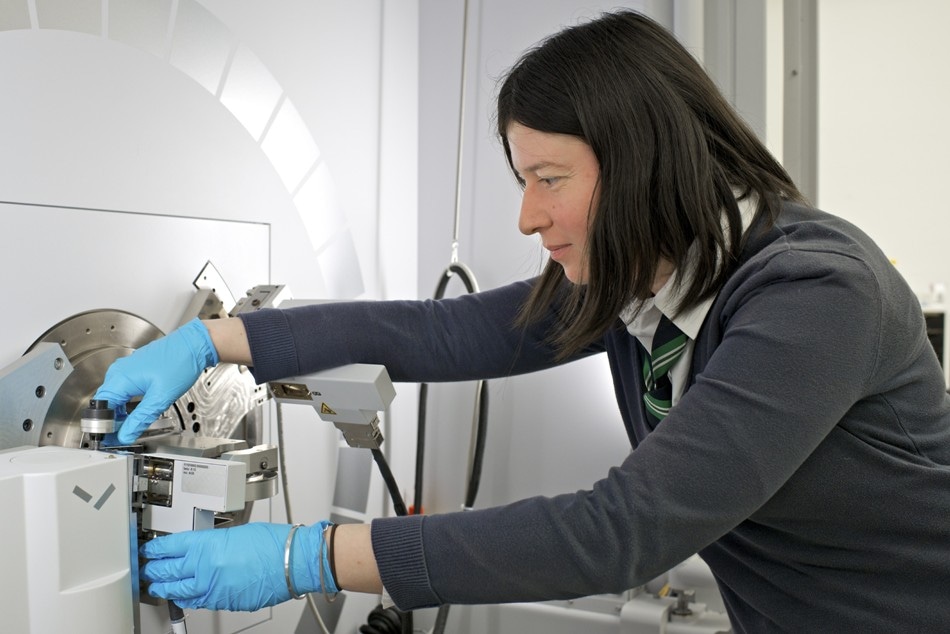May 9 2017
Materials researchers from the Paul Scherrer Institute (PSI) in Switzerland have worked in cooperation with the Université Grenoble Alpes, France, to develop a technique for enabling advancement of the lithium-sulfur battery. Theoretically, lithium-sulfur batteries have the ability to provide remarkably more energy when compared to the currently used traditional lithium-ion batteries.
However, the existing prototypes exhibit a noticeable loss of potential at the end of only a few charging cycles. Consequently, they cannot be put to extensive commercial use, for example, in electric vehicles. The new technique enabled the research team to obtain valuable knowledge about the way in which the rapid capacity loss happens. Subsequently, they demonstrated that by adding quartz powder to the liquid component of the battery, the rate of loss can be reduced. The outcomes of the research have been reported in the latest issue of Nature Energy, a scientific journal.
 PSI researcher Claire Villevieille, head of the Battery Materials Group, at the instrument for X-ray diffraction. Credit: Paul Scherrer Institute/Markus Fischer.
PSI researcher Claire Villevieille, head of the Battery Materials Group, at the instrument for X-ray diffraction. Credit: Paul Scherrer Institute/Markus Fischer.
The lithium-sulfur battery is regarded to be promising for prospective energy storage devices because the materials used are environment friendly, low-cost and can be easily obtained. Most importantly, this kind of battery has the ability to theoretically provide energy of nearly three times that provided by the lithium-ion battery extensively used at present. Yet practically, there are more obstacles to be overcome, for instance, the lithium-sulfur battery quickly loses its potential upon repeated charging. Existing prototypes regulate much less charging cycles than traditional lithium-ion batteries and in addition, they provide only a small portion of the theoretically probable energy.
In order to obtain in-depth knowledge regarding the processes behind the capacity loss, electrochemistry researchers from PSI developed a distinctive investigation technique that involves using X-rays to trace the chemical reactions occurring inside the battery. For the first time, the researchers demonstrated the manner in which lithium-sulfur compounds get modified as well as the impact of this on the loss of capacity. Moreover, for the first time, they discovered the way in which ordinary quartz powder, the main constituent of sand and the chief ingredient in glass, enhances the lithium-sulfur battery. When quartz powder is added to the liquid component of the battery, it improves the accessible energy and curbs the capacity loss that occurs over time. Various other researchers had earlier deduced that quartz powder reacts with the materials in lithium-sulfur batteries. At present, the researchers from PSI have calibrated the gains provided by the quartz powder.
With this additive, a lithium-sulphur battery’s performance is improved by 25 to 30 percent. We simply added the quartz powder to the electrolyte—that is, the liquid component of the battery—like adding washing powder to the laundry.
Claire Villevieille, Head of the Battery Materials Group
Quartz powder against the “dirt”
The research team has a strong basis for comparing their additive with laundry detergent, as a matter of fact, the quartz powder binds a type of 'dirt' in the battery. When a lithium-sulfur battery is under operation, polysulfides are formed. However, a part of polysulfides are lost to the liquid component of the battery and move forward and backward between the two electrodes during each charging and discharging cycle termed as a 'shuttle effect'. Consequently, these rogue polysulfides interact with the battery’s lithium electrode and minimize the amount of accessible sulfur, thus reducing the capacity of the battery.
The addition of quartz powder counteracts this tendency.
We found that quartz binds the polysulphides the way soap binds dirt, we call this the Coulombic efficiency... It increases from around 80 percent to 90 percent.
Claire Villevieille, Head of the Battery Materials Group
It increases and retains the charging capacity as the inner side of the battery remains clean and functional for a long period of time and the reversibility of the discharging process is enhanced. However, the Coulombic efficiency of a traditional lithium-ion battery is greater than 99.9%.
X-ray snapshots of a battery
The positive impact of the quartz was unearthed when the PSI research team worked in collaboration with a collaborator at the Université Grenoble Alpes to investigate the chemical processes that occur inside the battery, by means of a technique called operando X-ray diffraction. In general, liquids cannot be investigated with this method, so the processes in the electrolyte are concealed.
X-ray diffraction works only on ordered, crystalline structures; the polysulphides in the electrolyte, however, normally move around in a disordered fashion. Aligned in this way, the polysulphides diffract the X-rays and thus become visible. This enabled us for the first time to track the accumulation and transformation of the polysulphides inside the battery during charge and discharge.
Joanna Conder, First Author of the study
In an unanticipated manner, the research team discovered that the glass fibers minimized the undesirable build-up of sulfides. As glass mainly comprises quartz, the concept of starting to use quartz powder as a cleaning agent in the batteries was apparent.
Inexpensive and straightforward
The two PSI researchers admit that in general there are various techniques for preventing the polysulfides from dissolving in the liquid component of the battery and causing restriction of battery function, “But these are either very complicated or very expensive or both, especially when the method needs to be implemented on an industrial scale. Quartz, in contrast, is just about the cheapest material there is.” Adding such an additive to the electrolyte is absolutely uncomplicated. “That’s the great advantage of our method,” stated Joanna Conder.